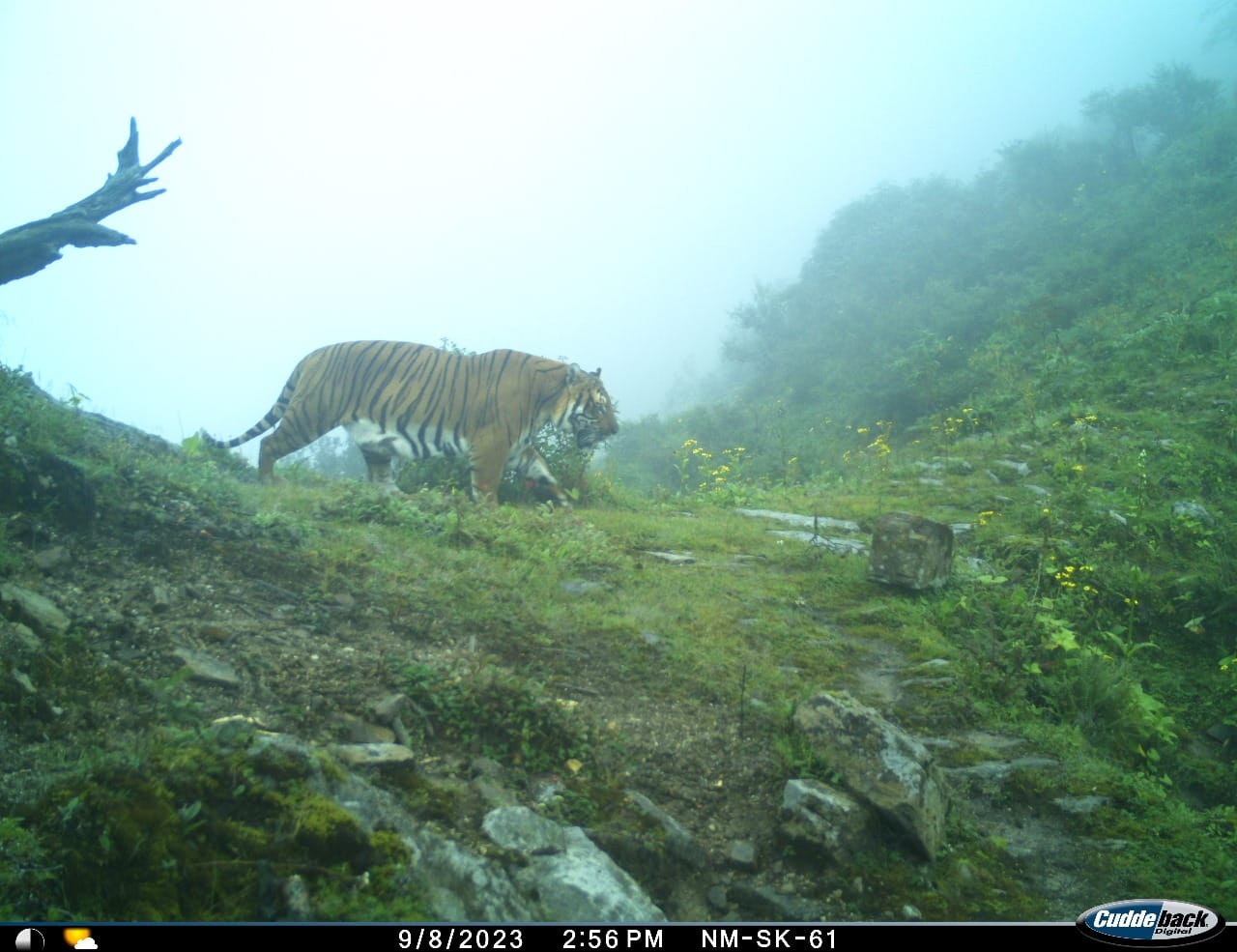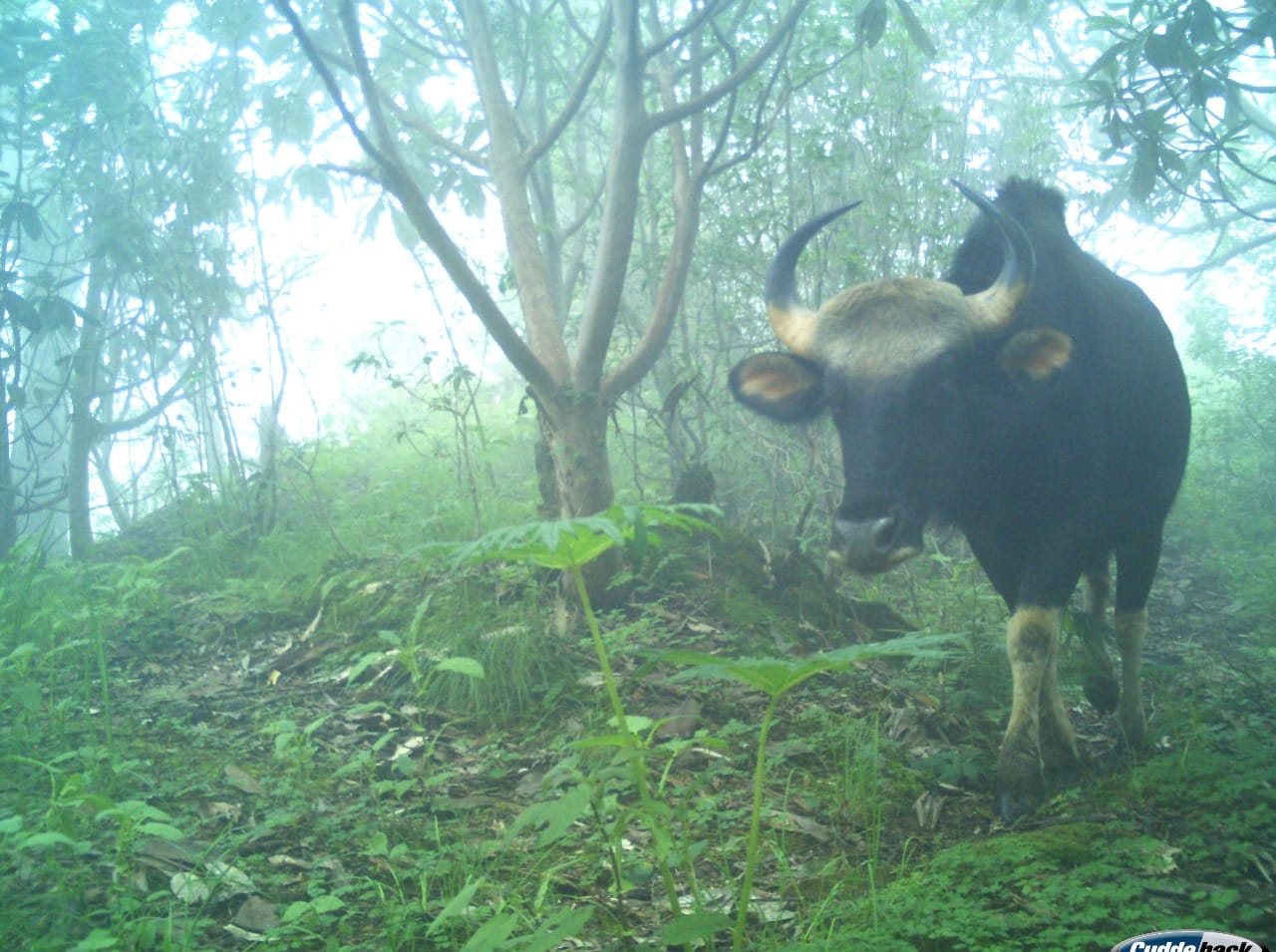

Forest and Environment Department, Government of Sikkim in collaboration with the Wildlife Institute of India (WII) had jointly deployed camera traps across the high-altitude regions of Sikkim to understand the impact of climate change on large mammals. Recently, while retrieving the images from the camera traps, multiple captures of Tiger at higher altitudes were observed from Kyongnosla and Pangolakha Wildlife Sanctuary. The highest elevation record of a Male Tiger at 3966 m was from Kyongnosla in Gangtok district which is a NATIONAL RECORD and second highest record globally after Bhutan.
Earlier in the year 2019, Tiger was recorded from North Sikkim (3602 m) and in 2023 from Pangolakha Wildlife Sanctuary at (3640 m). Gaur (also known as Indian bison) was observed at an elevation of 3568 m from Pangolakha Wildlife Sanctuary which is a WORLD RECORD.
The occurrence of Gaur at such high altitudes is a rare observation as they mostly remain below 1800 m. Gaur is the world’s largest cattle species and is endemic to south and southeastern Asia, and most of its population occurs in India. Gaur plays an important role in the food chain being an important prey for large carnivores such as tiger, common leopard, and Asiatic wild dog. Other animals photographed in the camera traps include Sambar, Dhole or wild dog, Himalayan Black Bear, Musk Deer, Serow, Mithun, Goral etc. The availability of such rich wildlife is a confirmation of the conservation efforts of the Government of Sikkim.
Source: Press Release from Forest and Environment Department, Government of Sikkim